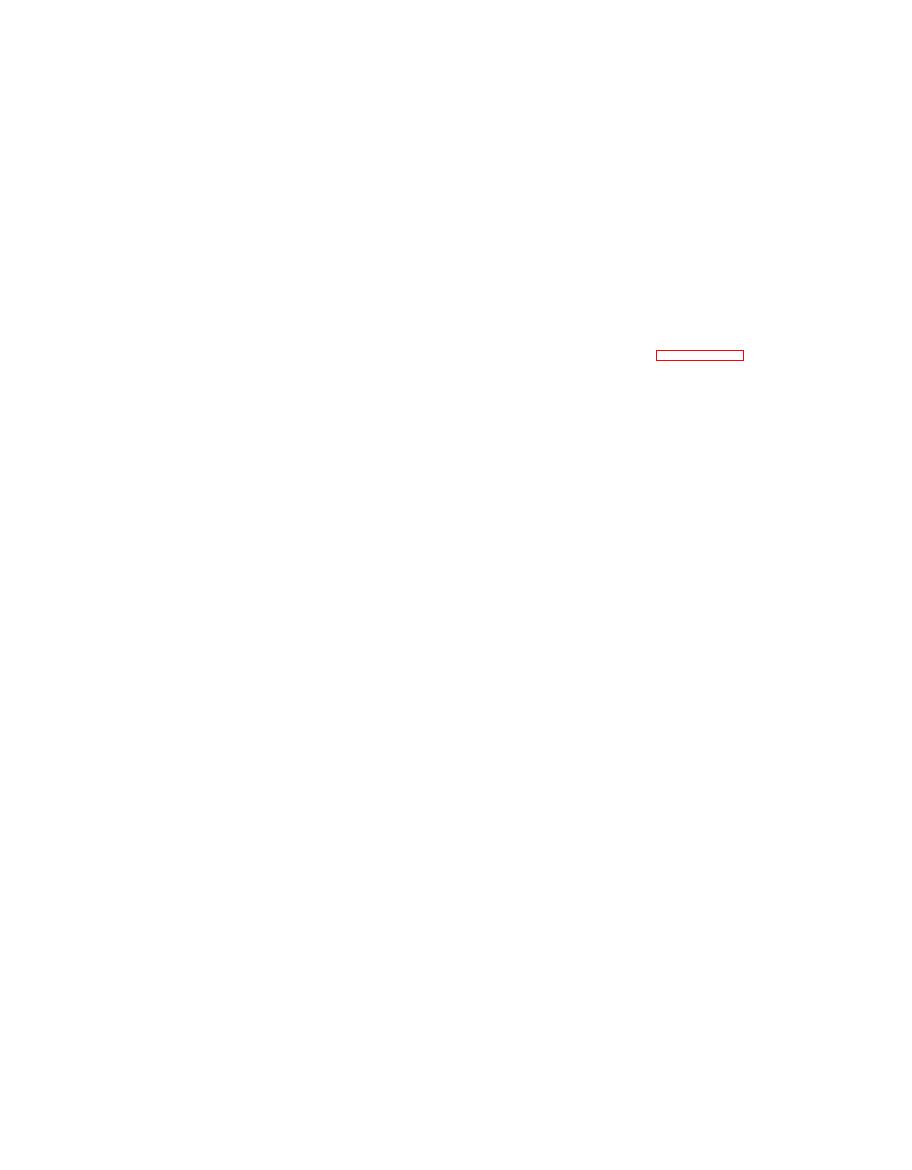 |
|||
|
|
|||
|
|
|||
| ||||||||||
|
|
 (10) It is important that the dip tank be
(4) Preclean core interior to remove oil and
loose sludge from the core to reduce con-
covered,
continuously
stirred, a n d f r e q u e n t
tamination
of
cleaning
solution
in
subsequent
checks on the viscosity be made as the JAN-T-
operations.
Connect
pump
equipment
so
that
171 is so volatile that the concentration may
fluid flow will be in the reverse direction of
change rapidly. After the cooler is dipped in the
normal flow. Use mineral spirits, Federal
primer it should immediately be blown out with
Specification TT-T-291, or kerosene, Federal
compressed air from both sides to insure against
Specification VV-K-211, or dry cleaning solvent,
plugging. The nozzle used to blow air through
Federal Specification P-S-661. Flush core in
the core should be a narrow slit 3 to 4 inches
reverse direction for 30 minutes or until solution
long. It is recommended that line air pressure at
appears
clean.
Reverse lines and flush ap-
about 100 psi be used.
proximately 15 minutes in the opposite direction.
(11) The tanks may be sprayed with primer
Drain cooler.
after the dip for appearance, if desired. For
spray, the proportions should be: 1 part MIL-P-
(5) Remove carbon deposits, engine oil,
8585 to 1 part TT-6-916B.
gums, lead deposits, and foreign contamination
by flushing cooler in opposite direction to normal
through (4), below.
oil flow for 30-60 minutes. Use solvent cleaning
(1) Oil cooler assemblies. Inspect oil cooler
compounds conforming to Specification MIL-C-
assemblies for dented tubing or bent fins. Inspect
6864. Reverse lines and
flush
in
opposite
gasket
contact
surfaces
for
burs
and
raised
direction for 15 minutes.
metal. Seal all oil cooler openings. Pressure
(6) Remove plug installed in bypass ((3),
check coolers by pumping engine oil (OE) into
above)
opening
and
block
cooling
section
coolers at 400 psi hydrostatic pressure. Coolers
opening. Flush for 15 minutes to clean bypass
must hold 400 psi for ten minutes without loss of
passage. Remove plug from cooling section
pressure. Release pressure, drain oil, and flush
opening and replace in bypass opening.
with dry-cleaning solvent or mineral spirits paint
(7) Rinse cooler for 10 minutes by cir-
thinner. Identify leaking coolers for possible
culating clear petroleum solvent such as dry-
repair.
cleaning
solvent,
Federal
Specification
P-S-661,
(2) Thermostatic bypass valves. I n s p e c t
or
kerosene,
Federal
Specification
VV-K-211.
engine
and
transmission
oil
cooler
thermostatic
System
shall
be
suitably
filtered
to
prevent
bypass
valves
for
stripped
or
damaged
threads.
circulation
of
foreign
matter.
Check
operation
of valve assemblies by im-
(8) Flush cooler with a preservative oil
mersing
valve
in warm water. Check tem-
consisting
of
three
parts
MIL-L-6082,
Grade
perature
of
water
with
accurate
thermometer.
1065, and one part MIL-C-6529, or, for systems
Gradually
raise
temperature
of
water to tem-
employing
MIL-L-7808
oil,
oil
cover. Valves
perature
i n d i c a t e d o n valve
MIL-C-8188B, or equivalent,
in preparation
for
marked 148 F must travel -inch
between
shipment
or
storage. Connect cooler to pump
80
F
and
valve from
185 F.
Remove
equipment and flush in each direction for 10
water and clean with dry-cleaning solvent or
minutes, checking the mesh screen after each
mineral
spirits
paint
thinner.
Replace
valve
flush to insure that no metal particles have
assembly when travel is less than -inch.
appeared. After flushing operations, install plugs
(3) O i l c o o l e r h o s e s . I n s p e c t o i l c o o l e r o u t l e t
in inlet and outlet ports.
and inlet hoses for breaks and abrasions in
(9) When the coolers have been cleaned it
woven shielding. R e p l a c e h o s e w h e n w o v e n
will be necessary t o r e c o a t t h e m w i t h z i n c
shielding is broken or abraided.
chromate
primer
per
MIL-P-8585.
In
order
to
(4) Oil cooler screens. Inspect oil cooler
insure that the coating covers the entire core, the
screens for bent, cracked, or broken mounting
oil ports should be plugged and the cooler dipped
brackets. Check for torn or broken screening.
in the zinc chromate. The dip solution should be
prepared as follows: 1 part MIL-P-8585 to 1
parts
JAN-T-171.
6-188
|
|
Privacy Statement - Press Release - Copyright Information. - Contact Us |